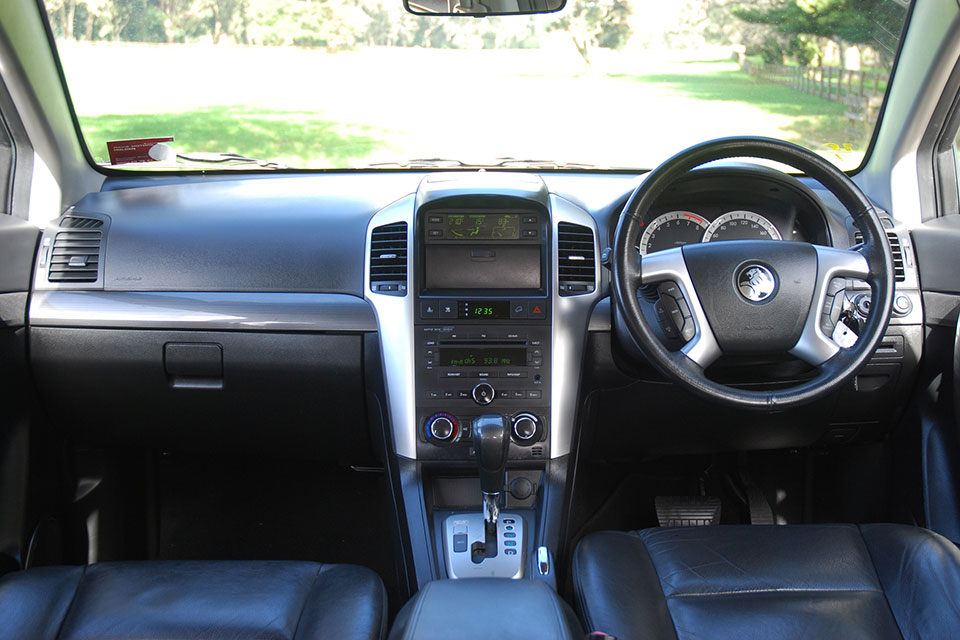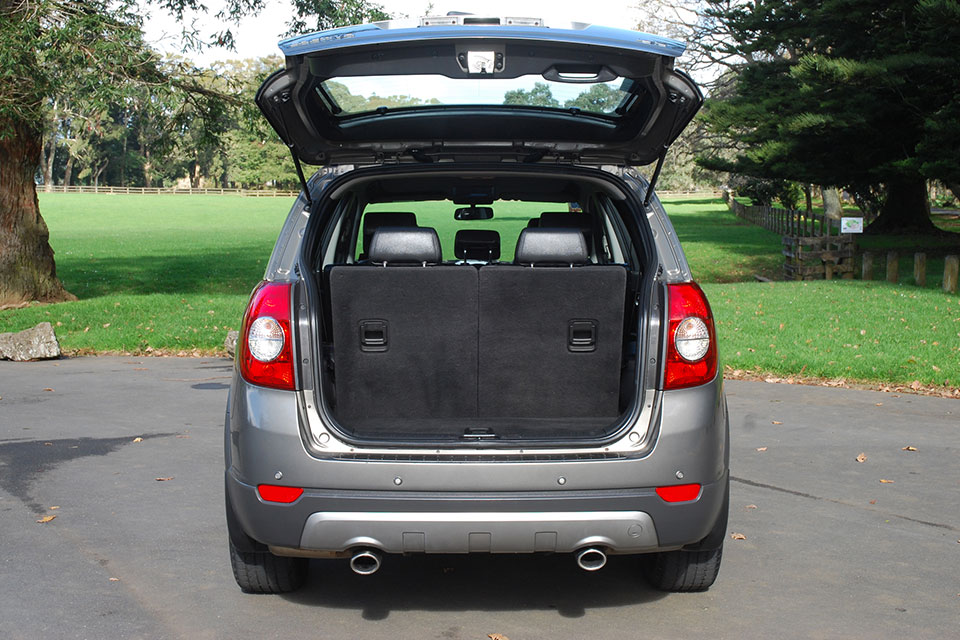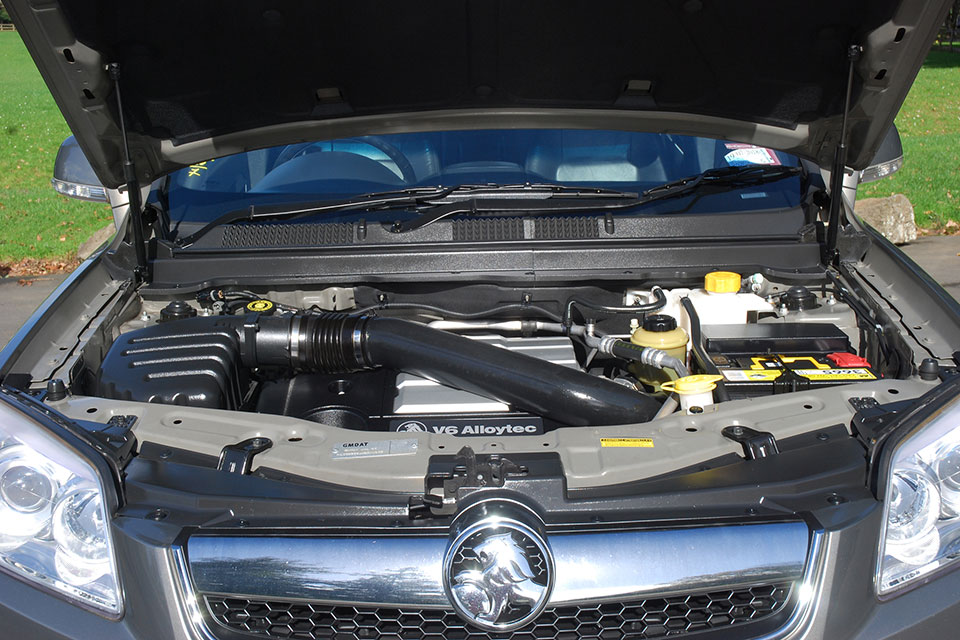Holden Captiva 2006-2011 used car review
The Holden Captiva is a family-size SUV that offers a lot of features for the money.

The Holden Captiva is a family-size SUV that offers a lot of features for the money. It’s got a very poor reputation for reliability and it’s not great to drive.
The Holden Captiva was launched in 2006 as a product of General Motors purchase of Korean-manufacturer Daewoo. It was initially released in two forms: a larger seven-seat version called the “7” and a smaller “5” or “MaXX” model. The bigger “7” version is far more common and the type we drove for this review. The Captiva on sale today is essentially the same model but was given a significant cosmetic and mechanical upgrade in 2011 with new engines and transmissions.
Inside and out
Outside, the Captiva looks tall and narrow which is an optical illusion created by the large black plastic-clad wheel arches. They also give it an off-road look. There is also a fake plastic skid plate at the front. The Holden badge is integrated into a chrome strip running through the middle of the grille. The rear is very curved and rounded for an SUV. The LX and CX models get roof rails to which handy cross bars can be attached.
Even when it was new, the Captiva felt dated and cheap. The plastics feel brittle and low quality. They scratch and show marks easily. The leather upholstery and steering wheel have a low-quality feel as well.
The instruments are basic yet easy to read; the steering wheel features buttons for the cruise control and six-disc CD stereo system. This and the climate control air-conditioning sit on the centre console, which comes out from the main part of the dash and closer to the driver.
At the top is a trip computer screen sitting above a blanking plate covering where a touchscreen system goes if fitted as an option. The handbrake is designed as a handle rather than a lever and is a little awkward to use.
The front seats are comfortable, although taller drivers might find the base a little short. The second row has belts and headrests for three, though getting that many adults across it would be a squeeze. Legroom is acceptable. The third row is bigger than that of some competitors but is best left for children.
With all seven seats in place, there is little boot space - just enough for a couple of shopping bags. Underneath the floor is a handy storage area that drains and can be used for wet items. If you drop the third row down, the boot becomes more usable, as it will be able to take four large suitcases. The second row can fold almost flat, providing up to 1,565 litres of space.
On the road
The Captiva was initially sold with only a 3.2-litre six-cylinder petrol engine, although a turbocharged diesel soon followed. The petrol engine is called “Alloytec”. Built in Australia, it is closely related to the larger version that powers the Holden Commodore.
It produces 169kW and 297Nm and is paired with a five-speed automatic transmission, which can be shifted manually. All-wheel drive is part-time and automatic - the car will naturally operate in front-wheel drive, and send power to the rear wheels only when it’s needed to improve grip.
On the road, the car does a competent job, though it’s not particularly enjoyable to drive. The tyres offer plenty of grip. The suspension is soft enough to soak up most bumps, though this means the car rolls in corners. As the steering is vague, it all feels a little “soggy” to drive. The engine has enough power for overtaking and hills, even when the car’s loaded. The automatic is okay though it can struggle to find the right gear on hills.
Visibility is adequate looking forward from the driver’s seat and very poor to the rear. Reversing cameras were an option on CX models from 2009 onwards. We recommend fitting a reversing camera - a number of the cars for sale on Trade Me Motors already have them fitted. You can buy one to fit yourself from $50 or a professional will do it from $200.
The petrol Captivas have a good tow rating. They can pull 750kg unbraked (a medium-size trailer) and 2,000kg braked (a medium-size trailer boat). The all-wheel drive system is also a help on slippery boat ramps. Diesel models have a 1,700kg braked rating.
Reliability
Numerous known issues with the car can appear even when it only has relatively low mileage. It was telling that when we contacted a Holden dealer for service pricing, his suggestion was to have the vehicle and its history checked carefully - and buy mechanical breakdown insurance.
The biggest issue is the automatic transmission, with failures as early as 50,000km. There are cases of repair under a factory extended warranty programme, though this might not have been done in some used cars. When buying, ensure the transmission is shifting smoothly and quietly. Any concerns about how it operates are a sign you should avoid the vehicle.
However, it has shown a propensity to stretch, resulting in significant engine issues and failure. The first sign is a very slight misfire, especially when idling, followed in time by the engine check-light lighting up, a more pronounced misfire, and reduced engine performance and fuel economy. Repairing a stretched timing chain is an expensive and labour-intensive workshop process with costs up to $2,000.
The bad news continues with the electrics and accessories, with failures of the air-conditioning system, air-bag control modules, central locking units and more. Speculation in the trade is that the wiring loom itself has been poorly designed, causing multiple electrical issues over the life of a Captiva.
Oxygen sensors on the 3.2-litre petrol engine are known to be prone to failure, another reason for the engine check-light to come on. That’s a relatively cheap repair at around $300.
The Captiva has been subject to some recalls over the years, for a series of issues related to brakes and steering. Call a Holden dealer to check these have been completed on any car you are considering.
Our sources tell us the Captiva is difficult to perform a wheel alignment on because the front suspension systems lack adjustment and clearance. Look for excessive and one-sided wear in the front tyres for an indication that the alignment is out.
Exterior door handle wear is to be watched, with the unit’s plastic failing over time.
Safety
The Holden Captiva (2006-2011) carries a four-star ANCAP rating. Standard safety features include anti-lock brakes, electronic brake-force distribution, electronic stability control, driver and passenger airbags, side airbags and curtain airbags. The latter only became available in 2009.
All five rear seats feature shoulder seat belts, which offer more protection than the lap-only type. Due to Australian regulations, there are no ISOFIX child seat mounts, though it does have tether points on the back of the middle row.
Cost of ownership
Holden recommends servicing the six-cylinder Captiva every 12 months or 15,000km, whichever comes first. Services alternate between minor and major. The first will cost $500, the second $315.
RightCar estimates that over 14,000km of driving a year, a Captiva will cost $3,220 a year in fuel. The fuel consumption is good, the 65-litre fuel tank will cost $130 to fill at $2 a litre and should take you 521km before the fuel light comes on. If you want to save on running costs, the diesel version is $600 cheaper a year to run.
A vehicle licence for the Captiva costs $76.92 a year, with the car in the cheapest ACC levy group.
Trade Me Insurance estimates insurance for a Captiva valued at $17,380 will cost $51.83* per month, the same as a Hyundai Santa Fe of the same year.
Buyers' guide
Despite its poor reputation, the strong Holden brand means the Captiva still fetches excellent prices in the used car market. Early, high-mileage (250,000km-plus) versions are listed on Trade Me from $7,000, with low-mileage pre-facelift 2011 cars priced as high as $28,000.
If you don’t need all-wheel drive, a front-wheel drive version became available in 2009. If seven seats are not one of your requirements, the SX was sold as a five-seater but some had the third row fitted as an option.
Variants
- SX - Features five seats (seven optional), front and side airbags, 17-inch alloy wheels, manual air conditioning, cruise control, leather steering wheel, CD player stereo
- CX - Adds six-disc changer, climate control air-conditioning, side curtain airbags (from 2009), roof rails and electric driver’s seat.
- LX - Adds full leather interior, digital information panel, 18-inch alloy wheels, automatic headlights and fog lights. Satellite navigation and a reversing camera were popular options.
Timeline
- 2006 Launched globally
- 2007 Turbocharged diesel engine added
- 2007 Production temporarily shifts from Korea to Thailand
- 2009 Curtain airbags added
- 2009 Front-wheel drive becomes an option
- 2011 Replaced by upgraded “Series II” version
Details
2009 Holden Captiva LX
$12,000 to $25,000 for models which have travelled 70,000 to 120,000km
3.2-litre six-cylinder, 169kW/297Nm (claimed)
Four-star ANCAP
15,000km or 12 months
Full-size steel wheel
11.2-litres per 100km (claimed)
Regular
4637mm
1849mm
1720mm
750kg (unbraked), 2000kg (braked)
11.9m
Five-speed automatic, all-wheel drive
This review covers the Holden Captiva for model years 2006, 2007, 2008, 2009, 2010 and 2011.
Review vehicle supplied by Turners Cars.
*Our insurance estimates are based on a 35-year-old male with no accidents in the last two years, garaging the car in Mission Bay, Auckland. The car is not used for business and will cover 10,000km to 20,000km a year. We estimate with no option add-ons and $500 excess. Customise your estimate at Trade Me Insurance.
Image gallery
Also consider






